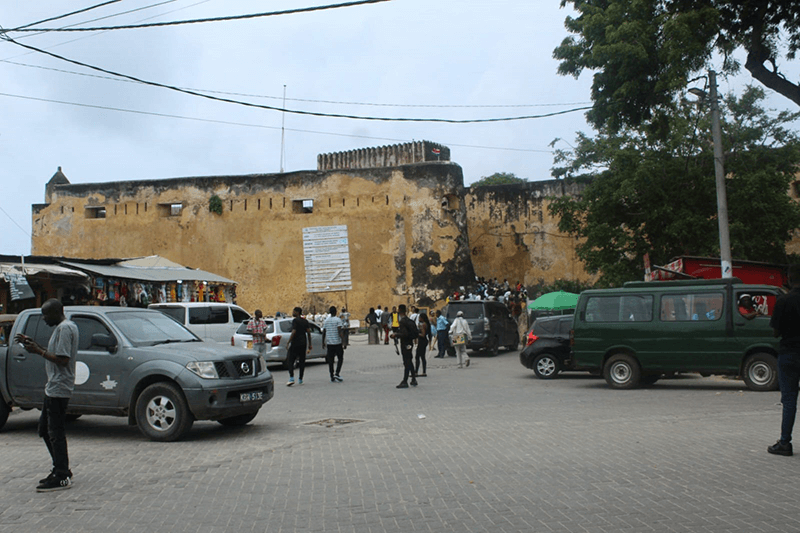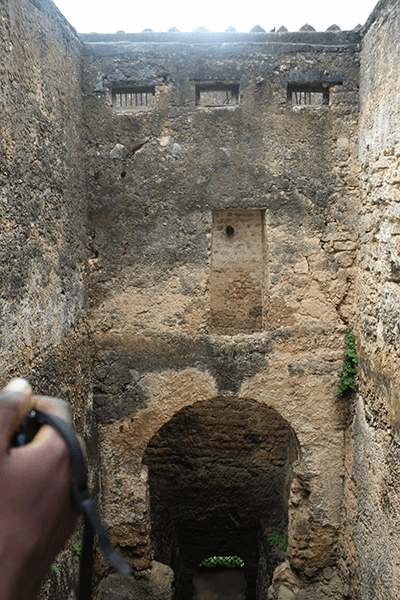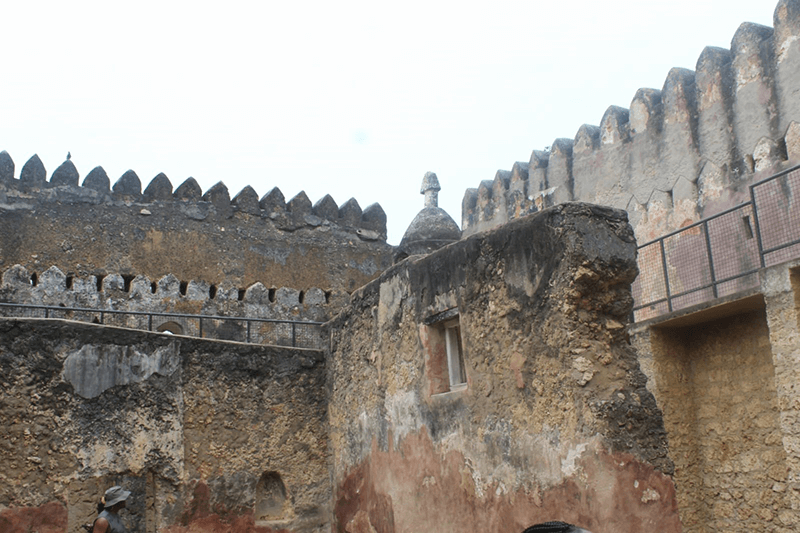Fort Jesus is a 16th century old Portuguese fort located at the Mombasa Island adjacent to the Indian Ocean and around the old part of Mombasa city also called Mombasa Old town. It is amongst the oldest historical sites in Kenya and a tourist attraction center in Kenya.
It was declared a world heritage site in 2011 by UNESCO.The fort sits on a 2.36 hectares land and includes the fort’s moat and immediate surroundings. The Fort’s layout was designed to reassemble human body with arms stretched. The Fort has a rich history that arouses the curiosity of many people to be eager to visit this historical site. We didn’t want to be left out and so we visited the fort on 10th August 2023 to get the amazing experience of visiting a famous place in our country. The fort is under the management of National Museums of Kenya.

The Fort Jesus was built by the Portuguese in 1593-1596 to protect the port of Mombasa against Arab invaders as well as African pirates. It was built under the orders of King Philip the first of Portugal, the fort was designed by an architect named Giovanni Battista Cairati. The Portuguese named it Fort Jesus because they were Christians and they believed Jesus will protect them from the enemies. A fun fact is despite the name, Jesus Christ never came to the site.The fort was built in a way that it can be used as a watchtower to see enemies as they approached from the Indian Ocean. The Portuguese used to store their weapons in the fort and criminals were also imprisoned there. The fort was also a military base from where expeditions were sent against hostile coastal states. The Fort has existed for four hundred and thirty years.
The Fort Jesus entrance has a very large door made of hardwood and curved to a particular pattern. The walls of the fort were 600mm thick on the top and over 1m thick on the bottom.This made it very hard for the enemies to break in.
At times when there are many visitors in Fort Jesus Historical site, usually there has to be long queueing at the reception of the Fort so that payment of the entry fees is made. The entry fee for the Fort is Ksh1200 for non-resident adults, Ksh 600 for a non-resident child,Ksh 400 for East African adults, Ksh 200 for East African children,Ksh 200 for Kenyan citizen adults and Ksh 100 for Kenya citizen children.
At the reception of Fort Jesus Historical Site, tourists can find a tour guide who takes them around the Site.
During the visit by Mount Kenya University students pursuing Journalism and Mass Communication accompanied by Lecturer Dr. Daniel Oloo and Lecturer Linet, the students met a tour guide of the day who was dressed in a buibui which is an Islamic attire for women. It is from her introduction that she appreciated her working environment. “Fort Jesus is a nice place to work and gain more skills as a student who study Tourism and Hospitality Management. Here, you can meet people from different walks of life and get to know each other. Apart from that, personally I thank Mount Kenya University, it is my university where I learn and through it today I have an opportunity to be an intern at this place” said Yasmin.

Afterwards, the students proceeded to where the map of the whole Fort Jesus was. Yasmin commenced by explaining the structures that were on the map and also showing the location of the different buildings that are in the fort. The map shows how the Fort Jesus was built in a structure of a human body. She showed some of the escape routes where the Portuguese used to sneak in with good supplies from the boats from the ocean. They then toured the prison inside the fort where the famous giriama independence fighter Mekatilili Wa Menza was jailed.
Fort Jesus being a beautiful scenery, many visitors were all over taking pictures and videos around the fort documenting how the place is. Some people could take selfie and other group photos.
Inspite of insecurity around the Coastal region, Fort Jesus still had many people visiting. According to Yasmin, she says, ” Despite of challenges of insecurity around coast the fort is still attracting tourists from different countries because it markets itself in history books and also the management engages in social media marketing.” Another reason why many visitors visit the fort is because it is located in Mombasa and it is a well known town.
Inside the fort there are also exhibits of artifacts discovered from the excavations of Fort Jesus, Gede ruins, Ugwana and Manda. There is also a water cistern which the Portuguese used to harvest water and 76 feet deep well. This ensured that the fort had sufficient supply of fresh water all through.
The management of the Fort Jesus ensures that the place is clean, preserved and takes good care of everything including the artifacts. The weapons that were used by the Portuguese are well preserved till date. Yasmin kept on giving more information about how the management manages everything in the fort. She said, “Around three years ago the government in collaboration with the National Museums of Kenya constructed a seawall on the eastern side of the fort that faces the Indian Ocean to secure the fort from erosion caused by strong tides.” The site has maintained strong walls for years because they were built with coral stone and lime mortar. The management also renovates the site but tries to have it have the original touch on the walls and ensures that they look original as possible. The management gets the funds for renovating and maintaining the fort from the entry fees from visitors.
The Fort Jesus being a famous historical in Kenya also faces some challenges. One of the challenges is inadequate tour guides around the site hence they end up overworking because of the numbers of visitors visiting per day. The climate changes make the walls of the site to fade hence require repairs. Certain parts of the walls are becoming weak and therefore require modern repairs that makes the site lose its originality. Deterioration and decay of artifacts is also another challenge because many historical artifacts and structures are subject to natural decay and damage from the elements. Therefore, these artifacts should be well taken cared of so that the invaluable pieces of history cannot be lost. The management in partnership with the National Museums of Kenya ensures that they find credible solutions to all the problems being faced in maintaining this historical site.

In conclusion, Fort Jesus is a great historical site because it holds such a rich history and its one of the oldest historical site in Kenya. I highly recommend people to visit this place because it has captivating buildings, weapons and artifacts that were used by the Portuguese in their day to day life. The site is located in an area that is well secured to enhance the security of the visitors as they visit the site. We really enjoyed our trip to Fort Jesus and it was really such an amazing experience to visit this old famous historical site. Thank you Mount Kenya University Journalism department and Dr. Daniel Oloo Ong’ong’a for organizing such a great trip opportunity.
Article by
- Winnie Dama
- Victor Oranja
- Daniel Boke
- Purity Jack
- Photography by;
- Breen Muhonja
- Brian Saidimu
